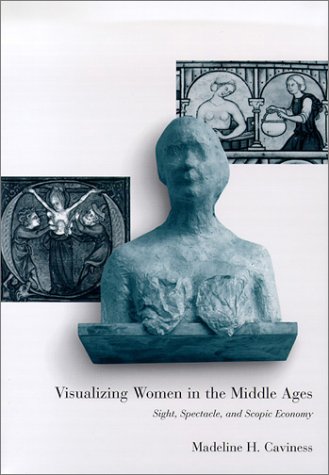The Middle Ages
1 total work
During the high Middle Ages in Europe, the act of looking was surrounded by superstition. It was believed to have magic power, it was able to arouse anxiety, and it was the subject of lengthy texts by both men and women. In Visualizing Women in the Middle Ages, Madeline H. Caviness interrogates twentieth-century theories of the gaze and concedes that the "male gaze"--first articulated by Laura Mulvey and a cornerstone of much feminist criticism--is useful for understanding a cultural code of patriarchy in the high Middle Ages. However, she argues, one should take into account the many varying visual modes that proliferated in the medieval era. For Caviness, an awareness of historical context places pressure upon contemporary theories like that of the "male gaze," changing their shapes and creating even richer dialogues with the past.
In a series of readings, Caviness demonstrates how looking functions within the much broader contexts of language and desire. The Old Testament story of Lot yields the material with which Caviness addresses the Mulveian gaze. In the narrative and in medieval visual representations of the story, she explores the biblical proscription of and anxieties about women looking. She then turns to medieval depictions of the torture of female saints and investigates how such images were not erotic in the Romanesque abstract modes but became disturbingly sexualized and sadistic in the more graphic renditions of the Gothic. Finally, Caviness looks at the distribution of relics of female saints in relation to Lacan's notions of the abject. Here she shows how the female body is de-eroticized and re-encoded as parts become metonymies for the whole and are revered as holy objects.
